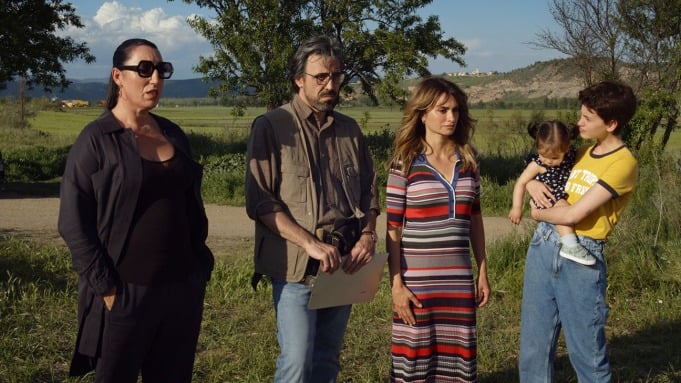
This year’s Oscar nominees are light on films related to the visual arts, with perhaps the strongest tie to the art world coming in Parallel Mothers, the latest offering from arthouse director Pedro Almodóvar, who had a solo show at Marlborough Gallery in New York in 2019.
Parallel Mothers follows a middle-aged woman and an adolescent girl who meet in the hospital while both giving birth. (The film’s official poster, featuring a lactating nipple, was temporarily banned on Instagram.)
Penélope Cruz plays Janis, a photographer who has an affair with a married archaeologist she asks to investigate a Spanish Civil War mass grave where her grandfather is buried. The movie earned two nominations, for original score and best actress for Cruz.
The best international feature film nominees include Norway’s The Worst Person in the World. Two of the three main characters are a medical student who pivots to photography, and an acclaimed comic artist who later sees one of his graphic novels adapted into a film. The movie was also nominated for best original screenplay.
The cast of Don’t Look Up. Photo courtesy of Netflix.
Art also makes a short but prominent appearance in Netflix’s Don’t Look Up, which got four nominations, including best picture.
Starring Leonardo DiCaprio and Jennifer Lawrence as astronomers who discover a comet set to destroy the Earth, the dark comedy includes one shot of Charging Bull, the famous bronze statue that has become a symbol of Wall Street. Without giving away too much, the sculpture serves as the perfect representation of our insatiable capitalist hunger.
Timothée Chalamet with a golden relief artwork of a giant sandworm in Dune, directed by Denis Villeneuve. Photo courtesy of Legendary Entertainment and Warner Bros. Pictures.
My favorite art cameo has to be in Dune, the sci-fi blockbuster that nabbed 10 nominations, behind only The Power of the Dog, which had 12.
When Paul Atreides (Timothée Chalamet) and his family move to the desert planet of Arrakis, they are seen packing up the family art collection, which includes a small Modernist-looking sculpture of a bull that seemingly portends the downfall of House Atreides.
The palace they inherit in Arrakis is decorated with wall-sized golden relief sculptures, including a stunning depiction of the planet’s deadly giant sandworms. This richly detailed world-building may help bring home the Oscar for best production design.
Art is a more significant plot driver in Affairs of the Art, nominated for best animated short film. Hand drawn on paper, it is director Joanna Quinn and writer Les Mills fourth film about the eccentric Beryl, first introduced in the 1987 animated short film Girls Night Out. The heroine’s latest adventures follow her efforts to become a successful artist—and her family’s equally obsessive embrace of other hobbies and crafts.
On the other hand, one of the year’s most prominent art films, Paper & Glue, a behind-the-scenes feature about the work of French street artist JR, failed to make even the best documentary shortlist.
JR had previously been nominated with the late New Wave cinema pioneer Agnès Varda for their documentary Faces Places in 2018.
Director Andreas Koefoed’s fascinating The Lost Leonardo, about the controversial rediscovery, restoration, sale and resale, and disappearance of Salvator Mundi, the world’s most expensive painting at $450 million, was similarly overlooked.
Léa Seydoux as Simone with Moses Rosenthaler’s paintings in The French Dispatch. Photo courtesy of Fox Searchlight Pictures.
Director Todd Haynes came the closest for art documentaries this year, but his shortlisted The Velvet Underground, about the avant-garde band promoted by Pop art great Andy Warhol, did not make the final cut for a nomination.
Neither did auteur Wes Anderson’s anthology film The French Dispatch, which included a chapter about the criminally insane artist Moses Rosenthaler (Benicio del Toro and Tony Revolori) as told by Tilda Swinton’s J.K.L. Berensen in the form of an art history lecture.
(Swinton’s partner, Sandro Kopp was among the real-life artists who made the onscreen artwork.)
Other snubs included Coded: The Hidden Love of J.C. Leyendecker, a short documentary about J.C. Leyendecker, a prominent early 20th-century American advertising illustrator who hid homoerotic references in his work, and Cryptozoo, comic book writer and artist Dash Shaw’s stunning hand-animated adult film, with its vibrant watercolor and pencil artworks depicting a world where humans struggle to coexist with mythological creatures.